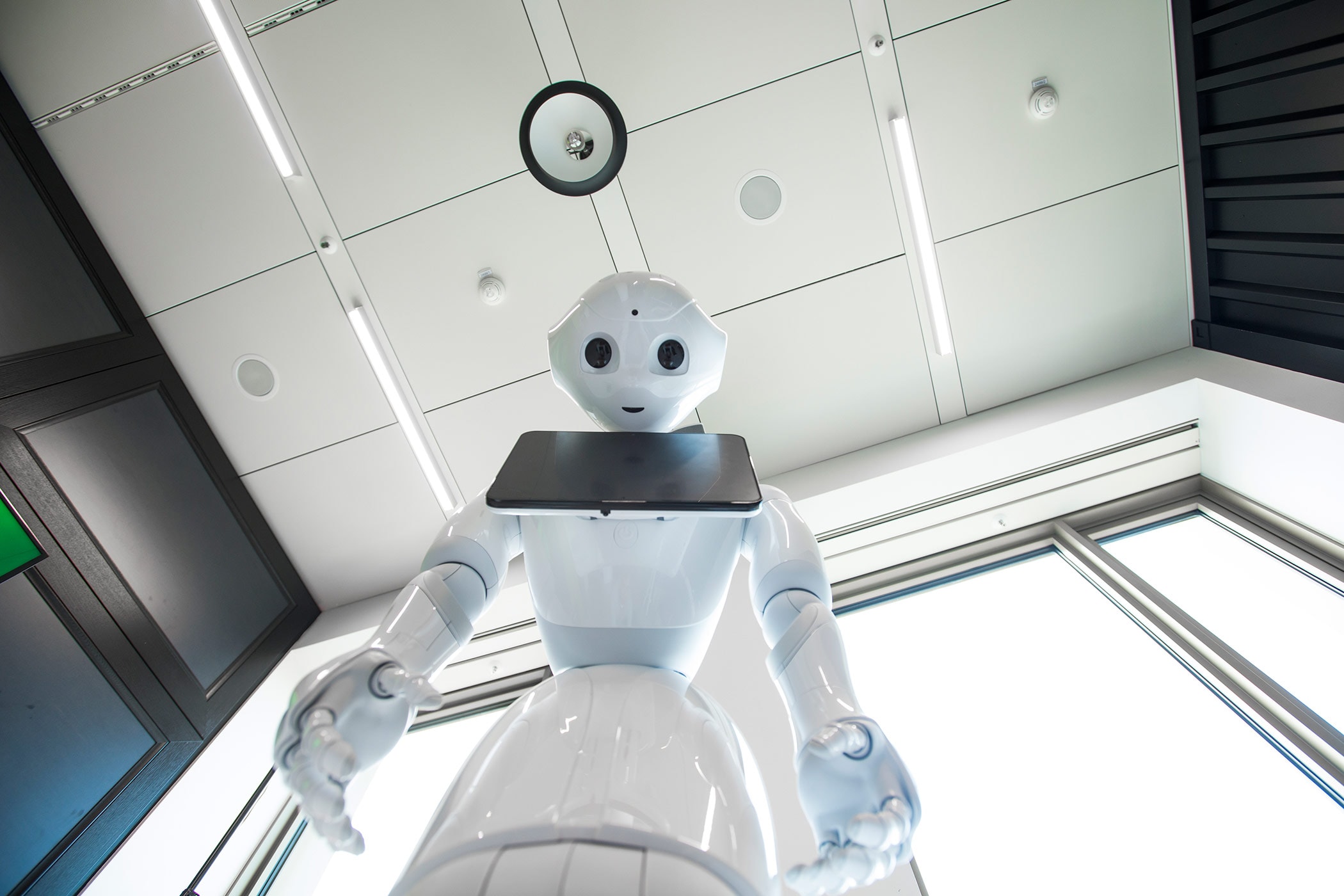{{item.title}}

At this year’s International Consumer Electronics Show, or CES1, Sony debuted the new version of Aibo, its robotic dog. First available in 1999, Aibo has had a makeover for the new century and now includes advanced artificial intelligence, adaptive behaviour to interact with its owner, OLED eyes to show its emotions and a wide range of movement – all of which helps build “an emotional bond with members of the household while providing them with love, affection, and the joy of nurturing and raising a companion.”¹
This cute canine might elicit warm and fuzzy reactions, but the feeling tends not to extend to humanoid robots, despite displaying similarly mind-boggling lifelike qualities.
Take the latest ability of Boston Dynamics’ robot, Atlas. In an extremely impressive feat of robotic engineering Atlas can now run, jump and perform backflips.
While Atlas may not have a humanoid face, watching the very human-like execution of its gymnastics is quite unnerving for some. The way Atlas wobbles then rights itself is something we can all relate to.
Another human-esque robot, Kengoro, developed by the University of Tokyo, may evoke a similar reaction of the hair sticking up on the back of one’s neck. Kengoro moves and acts like a human: he has a musculoskeletal system made of parts that replicate joints and tendons and a sensory nervous system of sensors to detect balance. And to cool himself down? He sweats.
While it was originally suspected that the more human-like they got, the better humans could relate to robots, it came with a stipulation². While people do indeed like their robots to look human, if they couldn’t be perfect, they could not maintain an affinity with it.
Uncanny valley
Naturally, not everyone perceives the same spectrum of creep-factor, but much like with art, individually, we know creepy when we see it. As with anything, the more we delve into the technology, the more we discover about ourselves.
So, why doesn’t the uncanny valley apply to the adorable Aibo? Well perhaps it does. Take the internet’s collective freak-out following the release of Boston Dynamics’ video this week showing its quadruped robot, SpotMini, opening a door for its friend.
Is this an example of the canine uncanny valley, or is it upsetting for a completely different reason? As TechCrunch notes, “If the company managed to program Spot Mini [sic] to actually open the door on its own in order to help free its friend, well, perhaps it’s time to be concerned.”3
For now, I’ll just take an Aibo, thanks.
PwC Australia
General enquiries, PwC Australia
References

